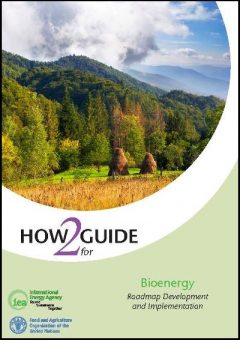 Bioenergy is the largest source of renewable energy today, providing heat and electricity, as well as transport fuels. Yet, more so than for other low‑carbon energy technologies, the complex and multi‑faceted supply chains of bioenergy projects call for careful consideration of sustainability issues and well-thought-out regulatory frameworks. These will enable continued bioenergy growth, while contributing to reduced GHG emissions and greater energy security while fostering the agricultural sector.
Bioenergy is the largest source of renewable energy today, providing heat and electricity, as well as transport fuels. Yet, more so than for other low‑carbon energy technologies, the complex and multi‑faceted supply chains of bioenergy projects call for careful consideration of sustainability issues and well-thought-out regulatory frameworks. These will enable continued bioenergy growth, while contributing to reduced GHG emissions and greater energy security while fostering the agricultural sector.
A concerted effort is needed to accelerate the development and deployment of bioenergy technologies globally. National and regional bioenergy roadmaps can play a key role in assisting decision makers identify pathways that are tailored to local resources and priority actions to overcome economic and non‑economic barriers. This How2Guide for Bioenergy was jointly developed by the International Energy Agency (IEA) and the Food and Agriculture Organization of the United Nations (FAO) as a toolbox that can be used for both planning and implementing new bioenergy strategies, or to improve existing ones. You can find guide here.
Source: iea.org



